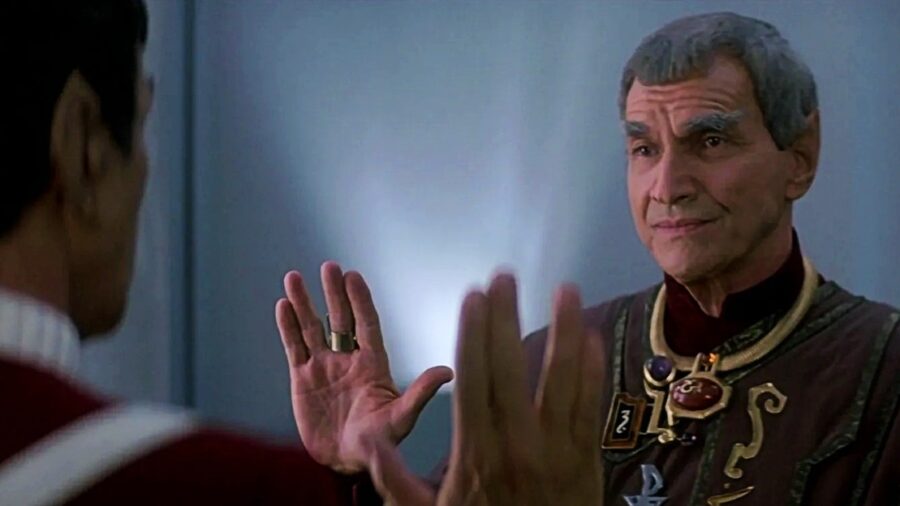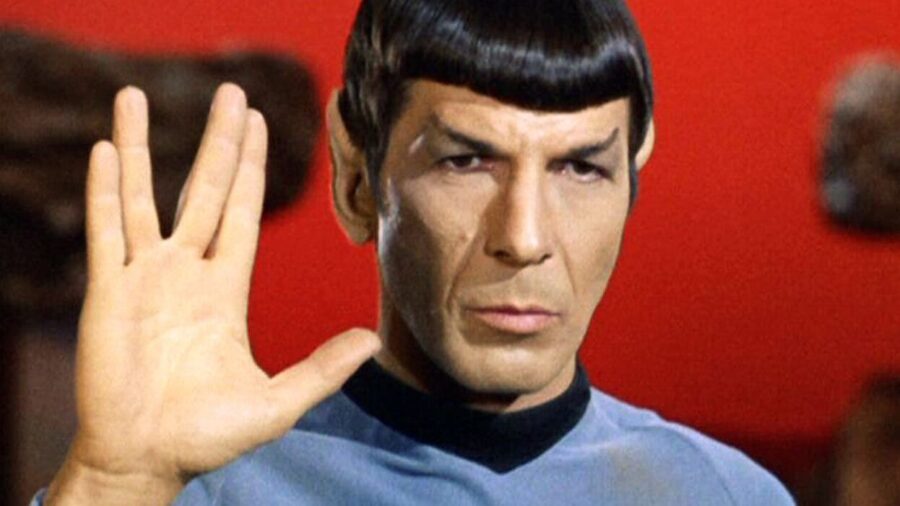Star Trek’s Vulcans Are Actually Referencing God, When They Do Spock’s Salute
Leonard Nimoy, the actor who played Spock, created the Vulcan salute based on a hand gesture he'd seen as a child at Synagogue.
This article is more than 2 years old

While the hit Paramount franchise Star Trek has had many memorable characters over the years, none have proven to be quite as enduring to our pop culture as Leonard Nimoy’s Mr. Spock. He helped exemplify aliens in The Original Series by playing a Vulcan, one whose race follows the dictates of logic. And Vulcans always greet each other with a special salute which, as this video explains, Nimoy came up with as a reference to God based on his early experiences attending Jewish religious services.
When Star Trek first began, neither Nimoy nor franchise creator Gene Roddenberry had come up with the idea of a Vulcan salute. However, when shooting for the iconic episode “Amok Time,” in which Spock and his crew actually visit the planet Vulcan for the first time, Nimoy decided that Vulcans should have a special way of greeting one another. When he expressed this sentiment to the director of the episode, the director was amenable to the idea and asked the actor what he would like to do, and this is when Nimoy first shared the Vulcan salute with someone else.
At the time, it seemed like Nimoy had come up with Spock’s unique salute on his own, but in the video, the actor explains that this was a remnant of his childhood. He attended Synagogue on high holidays with his family members, and there is a ritual in which the congregation must close their eyes while holy men chant a prayer. A young Nimoy snuck a peek and saw that the men were holding both hands out in front of themselves with their fingers splayed in what would later become the iconic Vulcan gesture of salute.

He would come to find out that the gesture recreates the shape of the Hebrew letter “shin,” which is the first letter in the word “Shaddai,” one of the many names of God. An older Nimoy was amused to recount that he survived peeking at the holy ritual when he wasn’t supposed to (that didn’t work out so well for the bad guys in Indiana Jones), but his memory of seeing that particular hand gesture stuck with him. Decades later, when he was bringing Spock to life, he decided to make that gesture part of the Vulcan culture, and once people started greeting him in the streets with that hand sign, he started to realize what a mark he had left on pop culture as a whole.
One of the great ironies about the fact that Mr. Spock is defined by a religious shout-out to God is that series creator Gene Roddenberry was deeply atheistic, and the first script he ever wrote for a Star Trek movie involved Kirk fighting an alien that claimed to be God (in case you’re wondering if William Shatner punched Jesus in that script, the answer is a resounding “yes”). However, it was Star Trek’s Vulcans that introduced the idea of IDIC, or “infinite diversity in infinite combinations.” And if Star Trek’s most famous character is remembered best for a salute that flies in the face of what that character’s creator actually believes, it’s a reminder that Star Trek, like the very concept of God, will always mean different things to different people.












